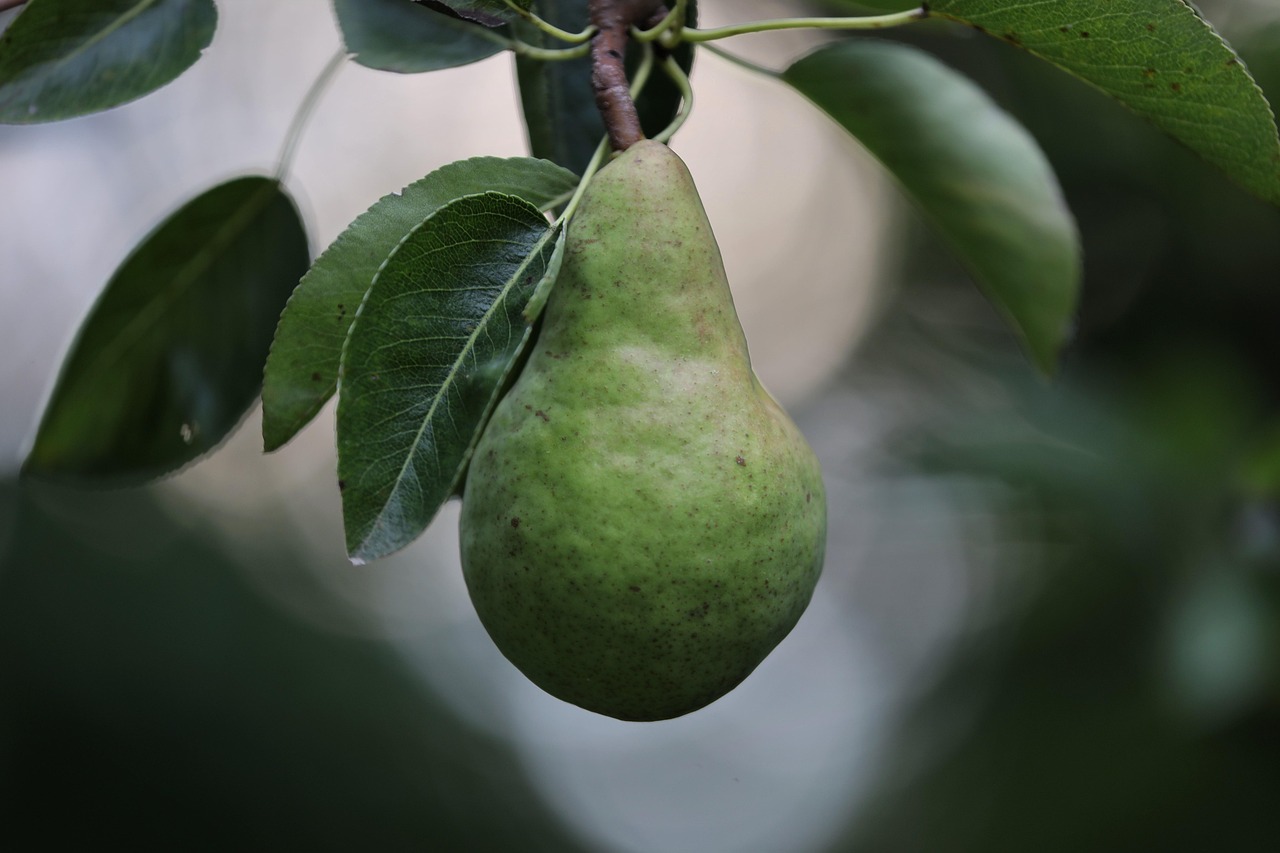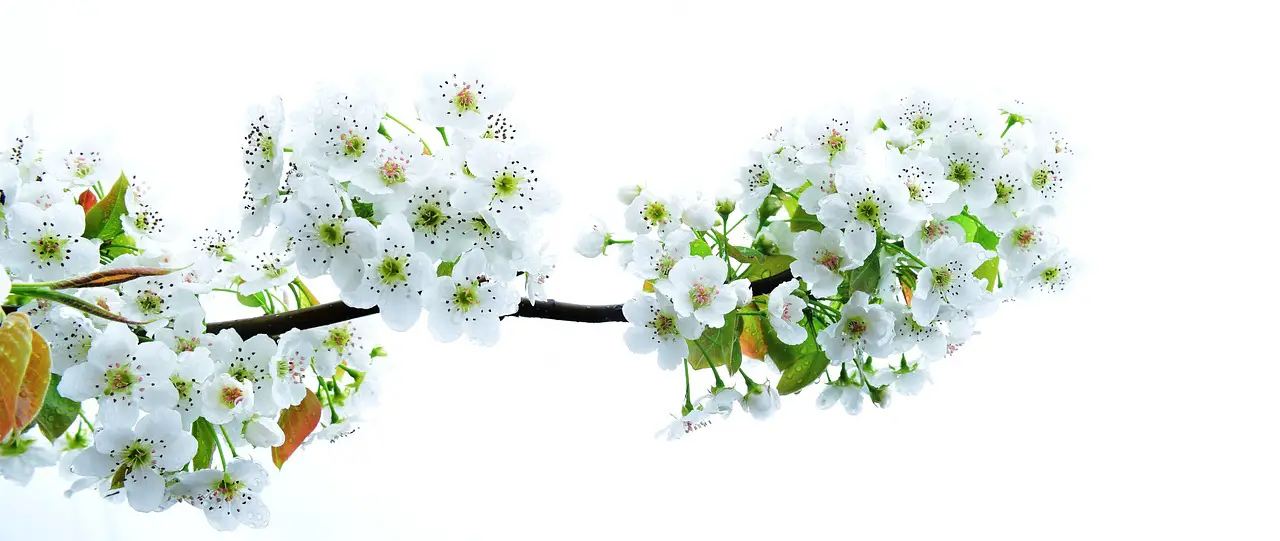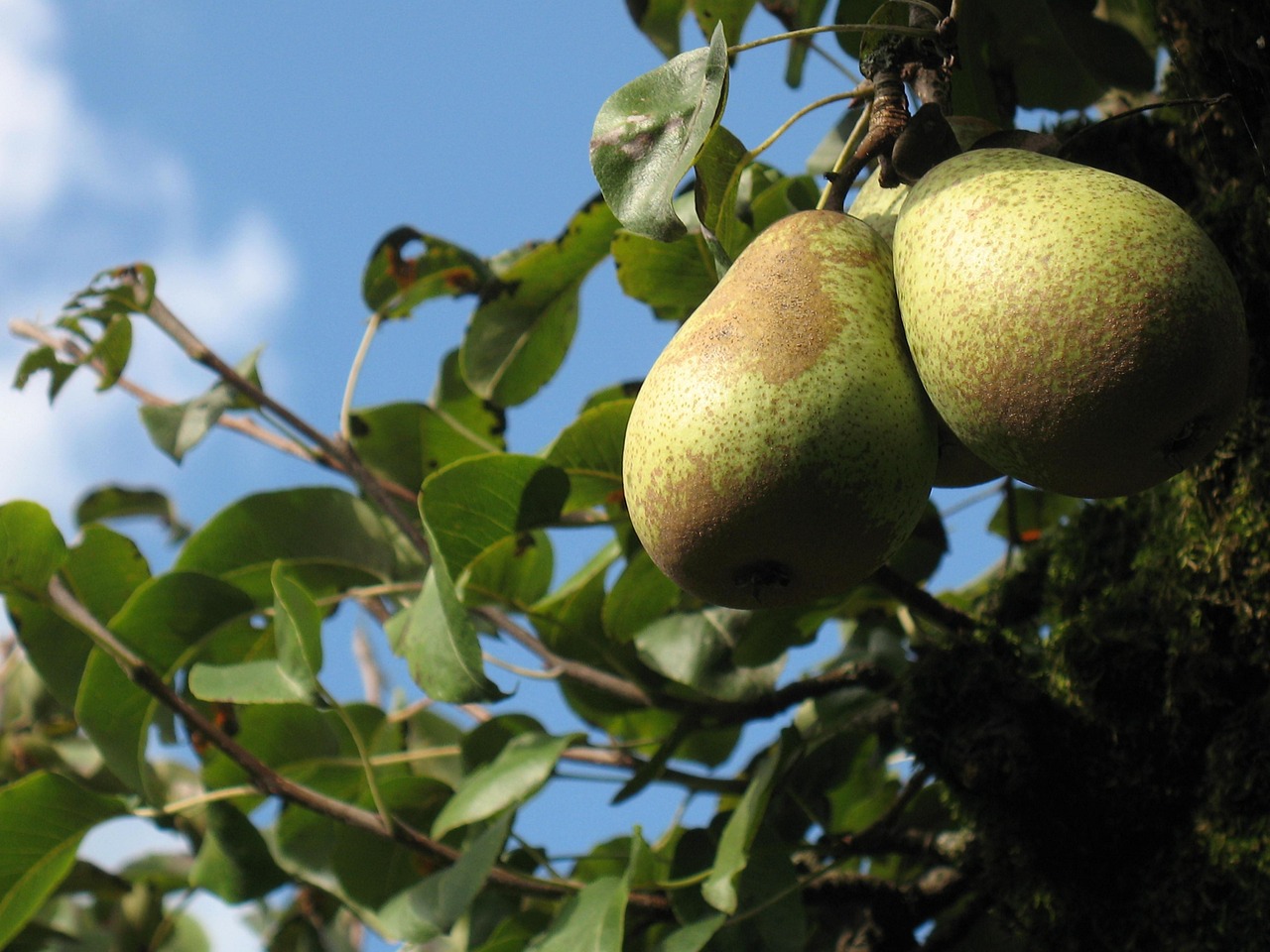Pear orchard pruning is essential for improving cross-pollination by enhancing air circulation, sunlight penetration, and flower accessibility. Properly pruned trees promote healthy growth and increase fruit yield by ensuring that pollinators can easily reach the flowers.
Pear trees thrive in orchards when they are well-maintained, and one of the most critical maintenance tasks is pruning. This practice not only shapes the tree but also plays a significant role in optimizing fruit production. Cross-pollination is vital for many pear varieties, as it enhances fruit quality and yield. Understanding the relationship between pruning and cross-pollination can help growers achieve better results.

Cross-pollination occurs when pollen from one pear tree fertilizes the flowers of another. Most pear trees require a compatible pollinator to produce fruit. This compatibility often depends on flowering times and the proximity of different varieties. By strategically pruning trees, orchardists can facilitate better pollination by creating conditions that are favorable for pollinators.
The Importance of Pruning for Cross-Pollination
Pruning pear trees serves multiple purposes. Firstly, it removes dead or diseased branches, which can harbor pests or diseases. Secondly, it opens up the canopy, allowing more sunlight to reach the inner parts of the tree. This increased light exposure encourages more flowers to bloom, which is essential for effective cross-pollination.
Additionally, pruning promotes better air circulation within the tree. Good airflow reduces humidity and the risk of fungal diseases. Healthy trees are more attractive to pollinators like bees, which are crucial for cross-pollination. The following are some key benefits of pruning for cross-pollination:

- Improved accessibility for pollinators.
- Increased sunlight exposure leading to more blooms.
- Enhanced air circulation reducing disease risk.
- Better overall tree health promoting fruit production.
Furthermore, different pear varieties can exhibit varying flowering times, which affects their ability to cross-pollinate. Therefore, selecting compatible varieties and arranging them in a way that maximizes their flowering overlap is crucial. Pruning should be timed appropriately to ensure that trees are in optimal condition during the flowering period.
Best Practices for Pruning Pear Trees
When it comes to pruning pear trees, several best practices can help achieve optimal results. These practices not only enhance cross-pollination but also improve overall tree health and fruit quality.
Timing of Pruning
The timing of pruning is critical. Generally, the best time to prune pear trees is during late winter or early spring while the tree is still dormant. This timing minimizes stress on the tree and allows for new growth when warmer weather arrives. Pruning too late in the season can interfere with flower development and reduce the potential for cross-pollination.

Types of Cuts
Utilizing different types of cuts can also impact the effectiveness of pruning:
- Thinning cuts: These cuts remove entire branches at their point of origin. Thinning helps open up the canopy and allows light to penetrate deeper into the tree.
- Heading cuts: These involve cutting back a branch to a bud or another branch. Heading cuts encourage bushier growth and can help balance the tree structure.
- Pinching: This technique involves removing the tips of young shoots to promote lateral growth and increase flower production.
Tools for Pruning
Using the right tools is essential for effective pruning. Sharp and clean tools minimize damage to branches and reduce the risk of disease transmission. Common tools used in pruning include:
- Hand pruners for small branches.
- Loppers for thicker branches.
- Saws for larger limbs.
- Pruning shears for delicate cuts.
Conclusion on the Role of Pruning in Cross-Pollination
The relationship between pruning and effective cross-pollination is evident in how well-maintained trees perform in terms of yield and fruit quality. By understanding the fundamentals of pear orchard pruning, growers can significantly enhance their harvests and ensure a thriving orchard ecosystem.

Understanding Cross-Pollination in Pear Orchards
Cross-pollination is a critical factor in the successful cultivation of pear trees. While some pear varieties are self-pollinating, many require pollen from a different cultivar to produce fruit. This section delves into the mechanics of cross-pollination, the role of pollinators, and how orchard layout can influence pollination success.
The Mechanics of Cross-Pollination
Cross-pollination occurs when pollen from the male parts of one flower is transferred to the female parts of another flower. The process involves several key components:
- Pollen Transfer: Pollen grains must be transferred from the anther (male part) of one flower to the stigma (female part) of another. This transfer is primarily facilitated by insects, especially bees.
- Compatibility: Not all pear varieties can cross-pollinate with one another. Understanding which varieties are compatible is essential for successful fruit production.
- Timing: The flowering periods of both varieties must overlap for effective cross-pollination. If they bloom at different times, cross-pollination will not occur.
The Role of Pollinators
Pollinators play a vital role in the cross-pollination process. Honeybees, bumblebees, and other insects are attracted to the flowers of pear trees for their nectar and pollen. The following points highlight their importance:
- Pollinator Diversity: A diverse population of pollinators increases the likelihood of effective cross-pollination. Different species have varying foraging habits and can reach different flowers.
- Foraging Behavior: Pollinators tend to visit flowers in a systematic manner, often moving between trees in search of food. This behavior can maximize pollen transfer between compatible varieties.
- Habitat Creation: Maintaining habitats for pollinators within and around the orchard can enhance their populations, leading to better pollination rates.
Choosing the Right Pear Varieties
Selecting compatible pear varieties is crucial for successful cross-pollination. Here are some popular pear varieties that are known to cross-pollinate effectively:
| Pear Variety | Compatible Pollinator |
|---|---|
| Bartlett | Bosc |
| Bosc | Bartlett |
| Comice | Seckel |
| Seckel | Comice |
| Forelle | Starkrimson |
| Starkrimson | Forelle |
When planning an orchard, it is beneficial to plant at least two different varieties that bloom during the same period. This approach ensures that cross-pollination can occur, resulting in higher fruit yields.
Orchard Layout for Enhanced Pollination
The layout of a pear orchard significantly influences cross-pollination effectiveness. Proper planning can make a substantial difference in fruit production. Here are some key considerations:
Spacing Between Trees
The distance between trees can affect pollinator access. When trees are too far apart, pollinators may not effectively transfer pollen between them. It is generally recommended to space pear trees:
- Standard Trees: 15 to 20 feet apart.
- Dwarf Varieties: 8 to 10 feet apart.
Planting Patterns
The arrangement of trees within the orchard can also impact pollination success. Consider the following planting patterns:
- Block Planting: Planting compatible varieties in blocks can help maximize cross-pollination by ensuring that pollinators have easy access to multiple trees.
- Interspersed Planting: Mixing compatible varieties throughout the orchard can encourage pollinators to visit multiple trees, facilitating pollen transfer.
Creating Pollinator-Friendly Habitats
Encouraging a healthy population of pollinators is essential for successful cross-pollination. Here are ways to create attractive habitats for pollinators:
- Diverse Plantings: Incorporate flowering plants that bloom at different times throughout the growing season to provide continuous food sources for pollinators.
- Nesting Sites: Preserve natural habitats and provide nesting sites, such as bee hotels or undisturbed areas with native plants.
- Pesticide Management: Minimize or eliminate pesticide use during flowering to protect pollinator populations.
By carefully considering these aspects of orchard layout and plant selection, growers can enhance cross-pollination and ultimately improve their pear harvests.
Understanding the Growth Cycle of Pear Trees
To effectively manage pruning and enhance cross-pollination, it is essential to understand the growth cycle of pear trees. This knowledge allows growers to time their pruning efforts and care routines effectively. Pear trees typically follow a seasonal cycle that includes dormancy, budding, flowering, fruit set, and harvest.
Growth Stages of Pear Trees
The growth cycle of pear trees can be divided into several key stages:
- Dormancy: During the winter months, pear trees enter a dormant phase. This is the optimal time for pruning, as the tree is not actively growing. It allows for clean cuts without disturbing new growth.
- Bud Break: As temperatures warm in early spring, buds begin to swell and break. This stage is crucial for determining the future fruit yield, as it indicates how many flowers will develop.
- Flowering: Pear trees typically bloom in late spring. The overlapping bloom times of different varieties are critical for successful cross-pollination.
- Fruit Set: After flowering, pollinated flowers develop into small fruits. This stage is vital as the tree allocates resources to developing fruit.
- Harvest: Depending on the variety, pears are usually harvested in late summer to early fall. Timing the harvest correctly ensures optimal fruit quality.
Timing Your Pruning
Understanding the growth stages helps in determining the best times to prune. Here are some guidelines:
- Late Winter to Early Spring: Prune during dormancy before bud break. This encourages healthy growth and minimizes stress on the tree.
- Post-Flowering: Light pruning may be done after flowering to remove any dead or damaged branches without affecting fruit set.
Common Pear Tree Problems and Their Solutions
Pear trees can face several challenges that may affect their health and ability to cross-pollinate effectively. Recognizing these problems early and implementing solutions is crucial for maintaining a thriving orchard.
Pest Management
Pests can significantly impact pear trees, reducing their health and fruit production. Some common pests include:
- Pear Psylla: These small insects feed on sap and can weaken trees. Control methods include using insecticidal soap or introducing beneficial insects.
- Codling Moth: This pest affects fruit by burrowing into it. Traps can be set up to monitor and manage their population.
- Spider Mites: These tiny pests thrive in warm conditions and can cause leaf discoloration. Increasing humidity and introducing predatory mites can help control their numbers.
Disease Management
Diseases can also threaten pear trees. Some prevalent diseases include:
- Fire Blight: A bacterial disease that causes wilting and blackening of branches. Prompt removal of infected branches is crucial to control its spread.
- Powdery Mildew: A fungal disease that appears as a white powder on leaves. Improving air circulation and applying fungicides can help manage this issue.
- Crown Rot: A soil-borne disease that affects the roots. Ensuring proper drainage and avoiding over-watering can prevent this condition.
Soil Management
The health of pear trees is closely linked to soil quality. Proper soil management practices should include:
- Soil Testing: Conduct regular soil tests to monitor pH and nutrient levels. Pear trees typically prefer slightly acidic to neutral soil (pH 6.0-7.0).
- Organic Matter Addition: Incorporate compost or well-rotted manure to improve soil structure and fertility.
- Avoid Compaction: Limit foot traffic and heavy machinery in the orchard to prevent soil compaction, which can hinder root development.
The Role of Nutrition in Tree Health
Nutrient availability is essential for optimal growth and fruit production in pear trees. Understanding the nutritional needs can help growers formulate effective fertilization strategies.
Nutrient Requirements
Pear trees require several key nutrients for healthy growth:
- Nitrogen: Essential for leaf and shoot development. Apply nitrogen-rich fertilizers in early spring as the buds begin to swell.
- Phosphorus: Important for root development and flower production. Incorporate phosphorus fertilizers at planting time or during dormancy.
- Potassium: Supports fruit quality and overall tree health. Apply potassium during the growing season to promote strong fruit set.
Fertilization Timing
The timing of fertilization is crucial for maximizing nutrient uptake:
- Spring Application: Apply fertilizers just before bud break to ensure nutrients are available during active growth.
- Fall Application: A light application of fertilizer in late summer can help prepare trees for winter dormancy.
By managing pests, diseases, soil health, and nutrition, growers can create an environment that supports robust pear tree development and improves cross-pollination outcomes.
Advanced Techniques for Enhancing Cross-Pollination
In addition to basic pruning and orchard management practices, there are advanced techniques that can further enhance cross-pollination and improve overall fruit quality in pear orchards. These strategies focus on leveraging environmental factors, innovative gardening methods, and technology.
Utilizing Companion Planting
Companion planting involves growing certain plants together that can benefit each other. In pear orchards, companion plants can attract pollinators, deter pests, or enhance soil health. Here are some beneficial companions for pear trees:
- Lavender: This fragrant herb attracts bees and other pollinators, increasing cross-pollination.
- Borage: Known for attracting beneficial insects, borage can enhance pollinator activity in the orchard.
- Nasturtiums: These flowers can deter aphids and other pests while attracting pollinators.
Implementing Integrated Pest Management (IPM)
Integrated Pest Management (IPM) is an environmentally friendly approach to pest control that combines different management strategies. This approach minimizes chemical use while maximizing effectiveness. Key components of IPM include:
- Monitoring: Regularly inspect the orchard for signs of pests and diseases.
- Biological Control: Introduce natural predators such as ladybugs or lacewings to manage pest populations.
- Cultural Control: Implement practices that reduce pest habitats, such as proper sanitation and crop rotation.
Using Technology for Monitoring and Management
Modern technology can enhance orchard management significantly. Various tools and devices assist in monitoring tree health and environmental conditions:
- Sensors: Soil moisture sensors can help in irrigation management, ensuring trees receive the right amount of water.
- Drones: Drones equipped with cameras can survey the orchard for health assessments, identifying problem areas quickly.
- Mobile Apps: There are applications available that help growers track pest populations, weather patterns, and flowering times, allowing for better planning.
Seasonal Care Beyond Pruning
While pruning is crucial, seasonal care throughout the year helps maintain healthy trees and supports their cross-pollination capabilities. Implementing a comprehensive care regimen is essential:
Spring Care
During spring, as trees awaken from dormancy, focus on:
- Fertilization: Apply nitrogen-rich fertilizers to promote new growth and flowering.
- Pest Monitoring: Begin monitoring for pests and diseases as buds break.
- Irrigation Management: Ensure adequate watering as temperatures rise and trees begin active growth.
Summer Care
In summer, attention shifts to:
- Fruit Thinning: Remove excess fruit to enhance size and quality in remaining pears.
- Pest Control: Continue monitoring and managing pests; apply treatments as needed.
- Watering: Maintain consistent moisture levels, especially during dry spells.
Fall Care
As the growing season winds down, fall preparations include:
- Harvesting: Harvest pears at the right time for optimal flavor and quality.
- Post-Harvest Care: Clean up fallen fruit and debris to reduce disease risk.
- Soil Preparation: Consider a late-season application of organic matter to improve soil health for next season.
Final Thoughts
The interplay between effective pruning, cross-pollination, and comprehensive orchard management is vital for successful pear production. By understanding the growth cycle of pear trees, utilizing advanced techniques, and providing seasonal care, growers can optimize their orchards for health and productivity.
The importance of selecting compatible varieties cannot be overstated, as it lays the foundation for successful cross-pollination. Additionally, creating an environment that supports pollinators through thoughtful planting and habitat management will enhance fruit yield and quality significantly.
With these practices in place, pear orchardists can look forward to bountiful harvests while contributing to a sustainable agricultural ecosystem. The journey of growing pears is not only about the fruit produced but also about nurturing the environment in which they thrive.
